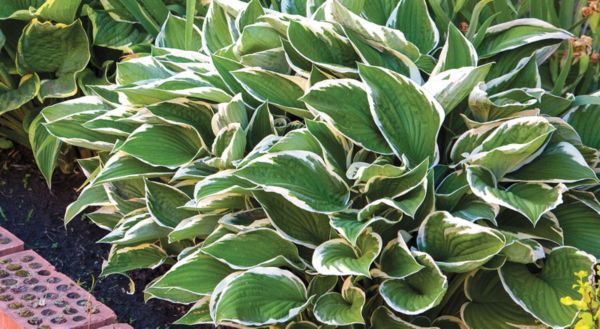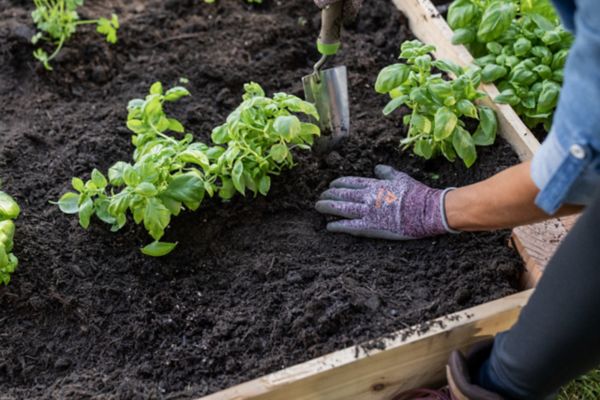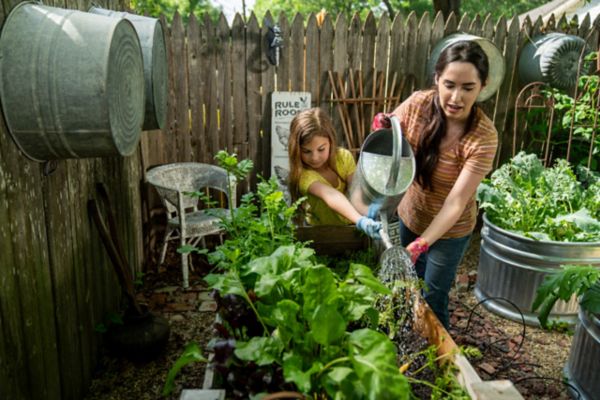How to Grow Lilacs
Authored by Leah Chester-Davis
Lilacs are lovely as specimen plants or when planted in mass for a flowering or screening hedge. They attract pollinators and add both color and fragrance to cottage gardens or to anchor cutting gardens. This plant has so many positive attributes, it deserves a spot in most any garden.
Lilacs often evoke fond memories. Their fragrant, intoxicating blooms seem to drip from the plant and just one whiff of that delightful fragrance can transport many to time spent in a parent’s or grandparent’s garden. Lilacs are sometimes considered old-fashioned, but they never go out of style. In fact, lilacs are often referred to as the “Queen of Shrubs.” Many new cultivars are adding to the excitement about this time-honored favorite. No wonder the National Garden Bureau named 2022 the Year of the Lilac!
Pale lavender to purple is perhaps the most popular and recognizable bloom color but colors extend to include hues of white, cream, yellow, blue, pink, and red. There are also cultivars with blooms known as picotee, which is a colorful bloom with petals edged in white.
Lilacs are characterized by small, four-lobed flowers borne on narrow, conical clusters or panicles. The panicles typically range from six to eight inches. The foliage ranges in shades of green, depending on the cultivar. Variegated leaf forms are available.
While this shrub can grow quite large, there are some options for those who may have smaller spaces. Some of the newer compact varieties are well suited to containers. Likewise, there are now options for those who may have enjoyed lilacs in cooler climates but now live in warmer climates. While lilacs may grow in Southern climates, they often struggle. The good news is that there are now some selections that are more tolerant of heat.
About lilac
| Botanical name: | Syringa |
| Common name: | Lilac |
| Plant type: | Deciduous shrub or small tree |
| Size: | 2 to 25 feet tall, depending on species and cultivar |
| Sun exposure: | Sun |
| Soil type: | Fertile loam |
| Soil pH: | 7.0 to slightly alkaline |
| Hardiness zones: | 3 to 8, depending on the species |
| Average first frost: | Varies by region |
| Average last frost: | Varies by region |
| Container friendly: | Yes, compact varieties |
| Beginner friendly: | Yes |
Growing

There are several species and thousands of cultivars of this plant. The common lilac, Syringa vulgaris, is one of the most widely grown.
Lilacs need sun, at least six hours per day, and soil that is rich in organic matter and drains well. They do not like wet feet. They benefit from afternoon shade. Lilacs do not like heat so avoid planting near pavement or walls.
This plant prefers soil that is neutral to slightly alkaline. The best way to determine your soil characteristics is to conduct a soil test. Kits are available from most county Extension offices for free or a nominal fee. Follow recommendations.
Lilacs bloom from April through June, depending on the variety and the region.
Lilacs do not like heat so avoid planting near pavement or walls.
Planting

Plants are available from most nurseries or local garden centers. They may be in containers and around 2 to 4 feet tall. They are available as bare root plants, typically when ordering online. The best time to plant lilacs is in the fall to allow the plant a chance to establish a good root system. In regions with harsh winters, the spring may be best. If planting in spring, do so before the lilac begins to bud.
When considering a site, give the lilac plenty of room to grow so that it does not have to compete with other shrubs or trees. It also needs space so that there is adequate airflow to help reduce chances of foliar diseases. If planting more than one lilac, space about 6 or 7 feet apart.
The National Garden Bureau recommends testing drainage before planting by digging a hole 8 inches across and 12 inches deep. Fill it with water. If any water remains in the hole after an hour, choose another planning area.
Prepare the soil by digging a large hole, preferably in an area that is already part of a prepared bed. Dig the planting hole as deep as the root ball and twice as wide. Make the hole big enough to accommodate the roots. Avoid bending or breaking the roots to make them fit. Cornell Extension recommends working a bucket of peat moss and a cup of 5-10-5 fertilizer into the hole, mixing it with the soil throughout the area.
Plant the lilac at the same depth as it grew in the nursery or the same level as it was in the container. Cover the roots with soil and press firmly. Water well. After planting, water so that moisture levels are even. Water regularly, 1 inch per week, until the plant is established, 2 to 3 years. Water during periods with drought conditions.
Apply a 3-inch layer of mulch such as straw, bark mulch, or leaves near the plant to suppress weeds and to keep moisture levels even. Avoid piling mulch against its base. Mulch can also be used for winter protection in cold climates.
During the first 3 to 4 years, allow the plant to grow and establish itself without pruning.
After the plant is established, prune immediately after flowers have faded. If you wait until later in the summer or fall, you will likely prune away next year’s flower buds. Use hand pruners to trim away dead flower heads. Use loppers or a hand saw to remove thick stems at the base of the plant in the center of the shrub. This helps air flow through the plant and encourages new stems to grow and flower. Remove a third of the thickest stems.
Fertilizing
In addition to the fertilizer you mix into the soil at the time of planting, Minnesota Extension recommends fertilizing again 2 to 3 years later, after the plant is established. Apply an all-purpose flowering shrub fertilizer in early spring. Follow label directions.
- Avoid applying lawn fertilizers near or around the plants; high nitrogen content fertilizers will increase leaf production and decrease flower production.
- Bonemeal is a good organic option that contains lime, which will help increase the alkalinity of the soil, the condition desirable for lilacs. While it is not a fertilizer, lime can be used to raise the pH.
Controlling Pests, Diseases, and Other Problems
- Powdery mildew can be a problem, particularly on some of the older varieties and in hot, humid climates. It’s more of an irritating cosmetic issue and likely not worth any type of treatment. When purchasing plants, choose disease-resistance cultivars and give them space to grow without being crowded.
- The lilac or ash borer moth lays its eggs in spring. The cream-colored larvae burrow into the stems and cause leaves to wilt. Small holes may appear in the branches where they exit. According to Montana Extension the best control is prevention. Annually prune out one-third of the oldest branches to the ground. Use pheromone traps to monitor the adults during the egg-laying period. Apply insecticides two to three weeks after the first adult moths are captured to disrupt their egg-laying period. Follow label directions.
- Scales weaken stems by sucking sap from them. Horticultural oils help control this problem. Follow label directions.
- Bacterial blight, which is characterized by brown spots on leaves and stems that typically appear in spring and turn black and enlarge during wet weather can be an issue. Good cultural practices such as keeping weeds suppressed, providing good air circulation, pruning out infected branches and discarding out of the garden, and watering at the base of the plant help reduce chances of blight.
The best time to pick or harvest flowers is in the cool part of the day.
Expert Tips

- While the common lilac, Syringa vulgaris, is favored for its scent and blooms, newer cultivars may not be as fragrant. Depending on the cultivar, they may have other attributes that make them desirable, such as more heat resistance for warmer climates. Check with your local garden center or Extension office for recommendations on cultivars to try in your area.
- The National Garden Bureau and the International Lilac Society are other helpful resources for those wanting to take a deeper dive into learning about this plant.
- For assistance in diagnosing any plant problem contact your county Extension office or Master Gardener group. They typically help diagnose and make recommendations for best course of action.
Frequently asked questions
What is the best way to propagate a lilac?
Some cultivars send out suckers near the base of the plant that already have roots. You can dig these up and transplant. Or you can take a cutting of the plant in early summer, dip in rooting hormone, and place in a rooting medium. Another method is layering where you take a lower branch on the plant and while it is still attached make a cut that is an inch or two long. Pull the branch and the cut area close to the ground, mound it with soil, and use a stone or a wire wicket to hold it in place. Keep it watered so that it will root. When rooted, it can be cut from the parent plant. Allow roots to continue to form and then dig up and transplant.
What are the best lilacs to grow in the South?
Lilacs are challenging in warmer climates. They need a dormant period when it is cold enough to set flower buds. And then the heat and humidity of the region can be hard on them. The National Garden Bureau lists a few that are worthy of consideration:
- Syringa x ‘Josee’ is a small rebloomer that grows in the widest hardiness range, Zones 3 to 9.
- Some options for Zone 8 are Blue Skies, ‘Old Glory’, Syringa x sinensis ‘Lilac Sunday’ and ‘Syringa x oblata ‘Betsy Ross’. These all grow 8 feet or taller. A small option is Baby Kim®.
Are there small options for limited space or containers?
Yes, among those listed by the National Garden Bureau are Baby Kim® (Zones 3-8); Sugar Plum Fairy® (Zones 3-8); SCENTARA® lilacs (Zones 2-8), and the reblooming Little Darling® (Zones 4-8), and Bloomerang® Dwarf Pink and Bloomerang® Dwarf Purple (Zones 3-7).






